The Mirror, Vol. 13, No. 636
Since the establishment of diplomatic relations in 1997, more and more links between Cambodia and South Korea have developed – not receiving much general attention, but quite real. Over the last five years, tourists from Korea have topped the list of foreign visitors. And there are about 4,000 Koreans living in Cambodia.
But there is also a growing presence in the opposite direction: there are 8,400 Cambodians living in Korea, among them 2,900 Cambodian women married with Korean men. There is an increasing number of Cambodian students in Korea, and there are 4,900 workers. The Korean president announced that in addition, 3,500 more Cambodian workers will be accepted to work, aiming at a total number of 9,000 Cambodian workers in Korea.
Korea is the second largest foreign investor in Cambodia. Korea is one of the important donors of Cambodia. Since 2001, there have been US$220 million granted as loans and US$46 million as grant. Recently, the amount of US$200 million as a special loan has been added to the list.
But Korea is not known broadly in Cambodia – we add therefore also some pictures, just as the weather permitted, with sunshine and with rain. Participating in a series of working sessions in the Internet Corporation for Assigned Names and Numbers – the organization that cares for the address system of the Internet, where I am involved since 1999 – I had the opportunity to compare and to reflect.
Compared to the size of the population of Cambodia of 14 million, the city of Seoul alone has a population of more than 10 million.
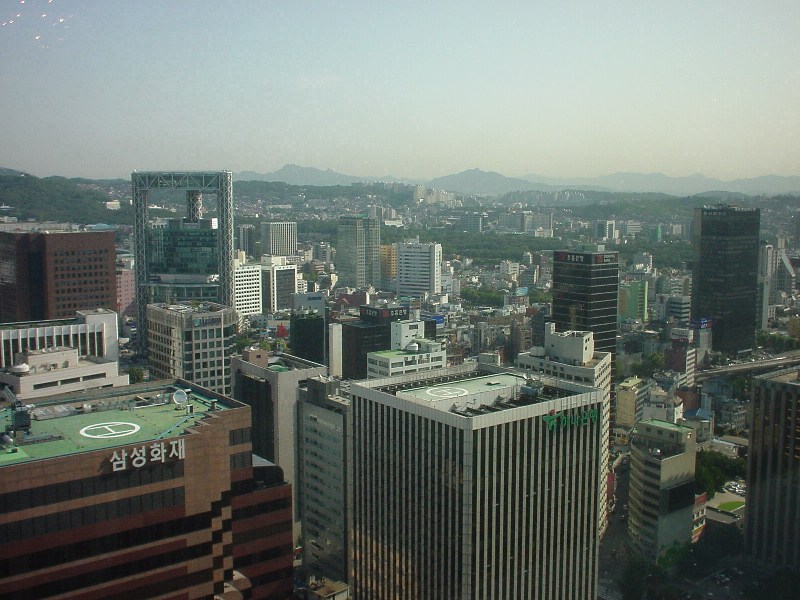
High - high -
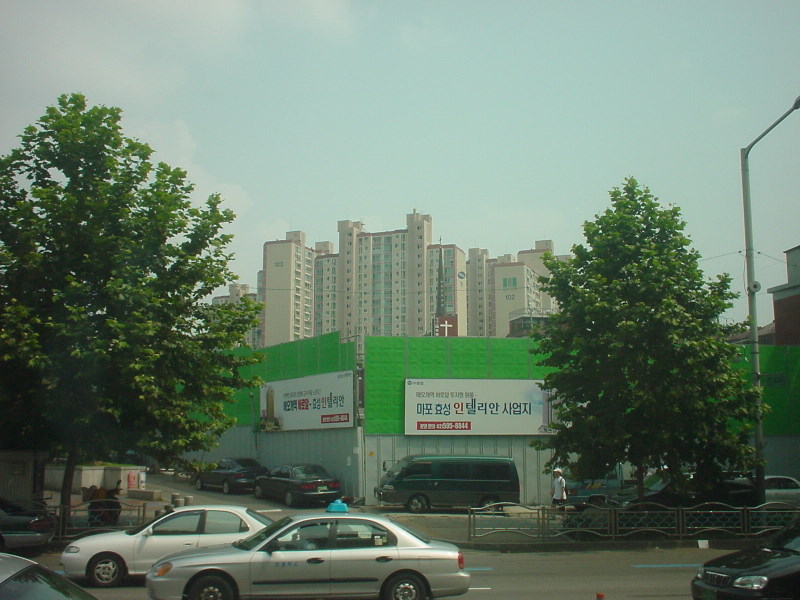
General housing
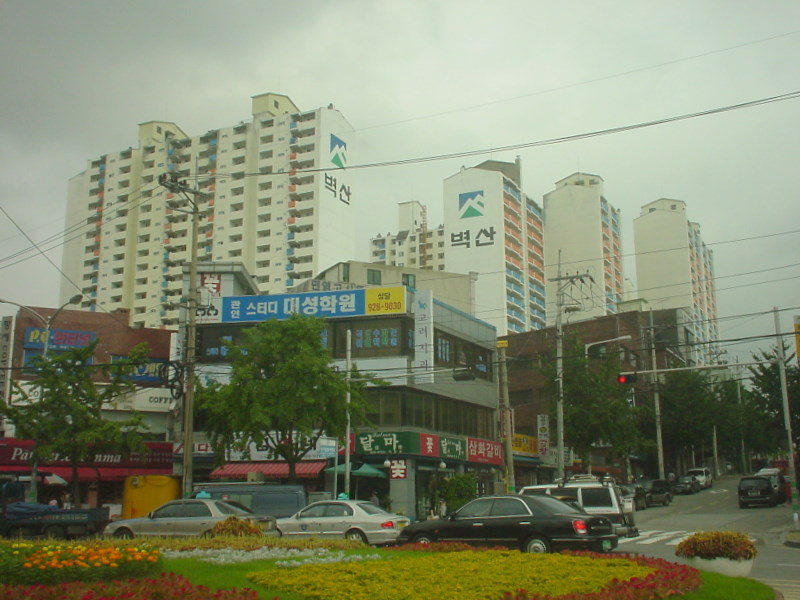
The future of Phnom Penh?
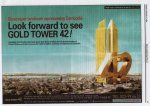
42 story Gold Tower for Phnom Penh
Maybe some of the ambitious Korea related building projects in Cambodia have to be seen on the background of Korean city developments – still the very high rise buildings planned in Phnom Penh do not yet fit into the environment: what about traffic access, water supply and disposal? just to mention some technicalities.
And there are not only technicality related disruptions. I took the following picture of the Boeng Kak Lake in Phnom Penh some years ago, leaving for Bangkok. Many big cities around the world maintain their lakes or rivers, or even create artificial ones. The Phnom Penh administration is destroying what there is – filling about 90 % of the lake with sand for higher level business, also displacing about 4,000 families.
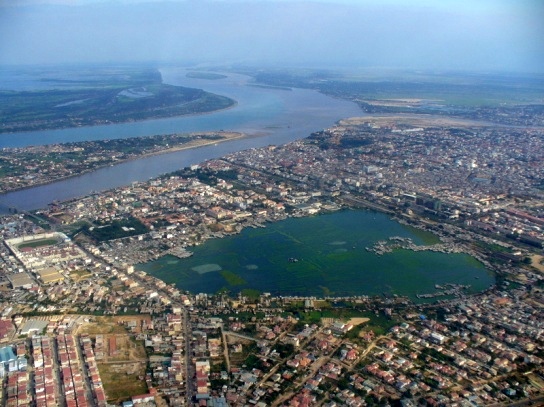
The Lake that is no more like that
It is encouraging to see how Seoul has transformed an old water disposal canal into a nice place of nature in the middle of the city: a place of recreation – going for a walk, or even for jogging, with three different suggested courses of 1.8, 3.6, and 5.8 kilometers.
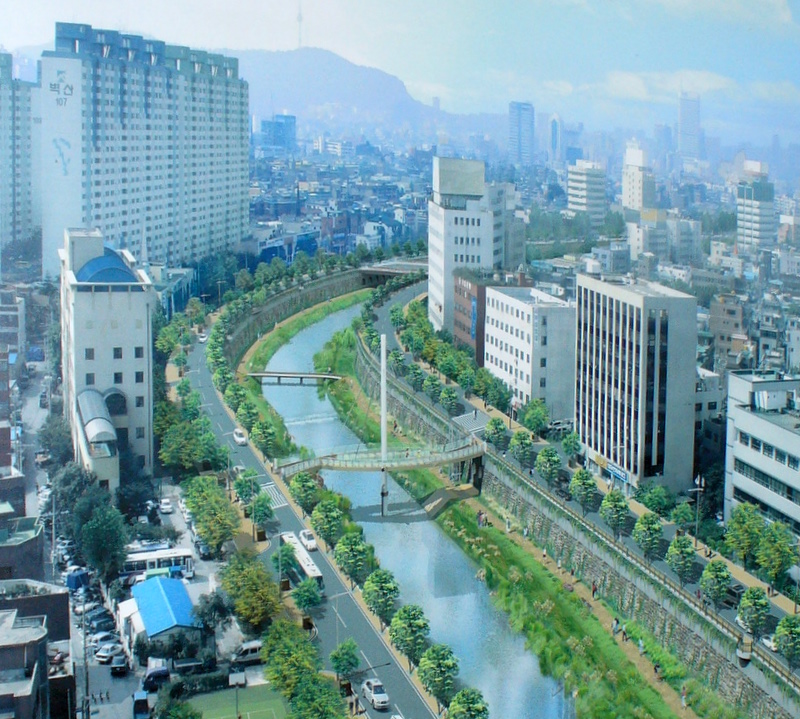
River walk
And it is encouraging to see the many different spheres of life in more detail, being cared for, manifest in this town.
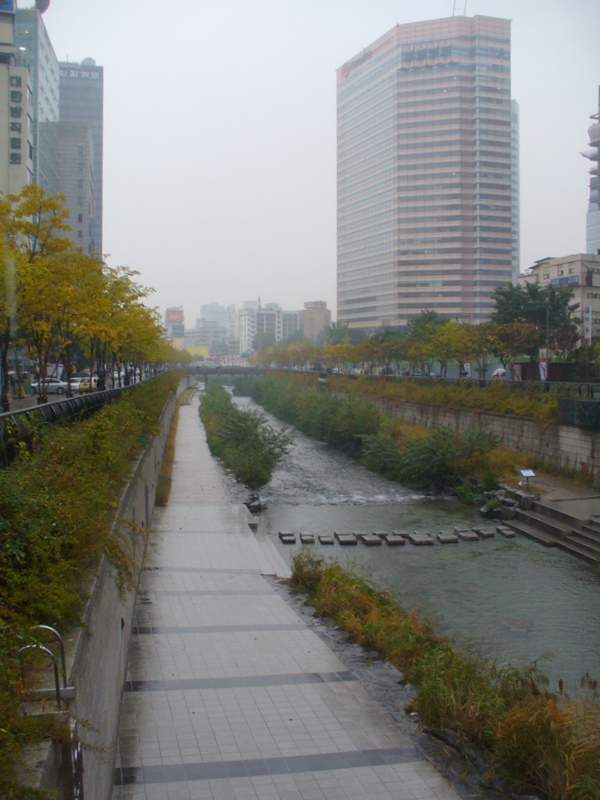
River walk - it rains
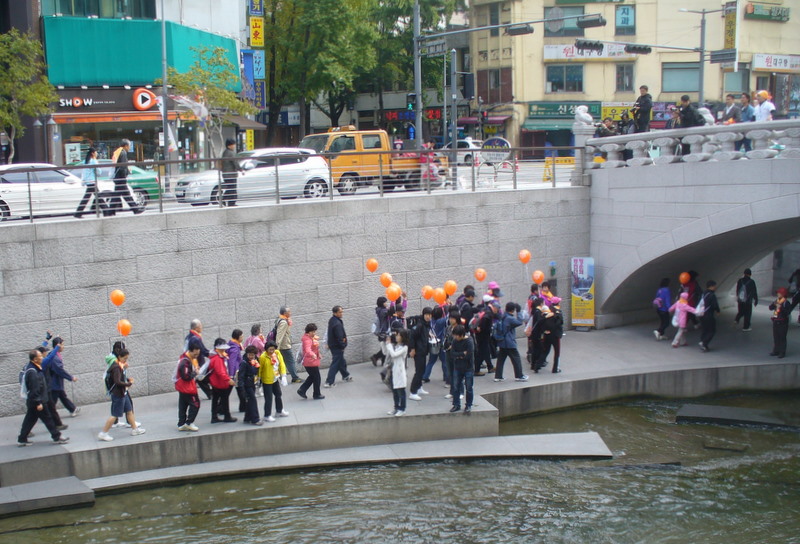
River walk - nature in town
Colorful design all over town.
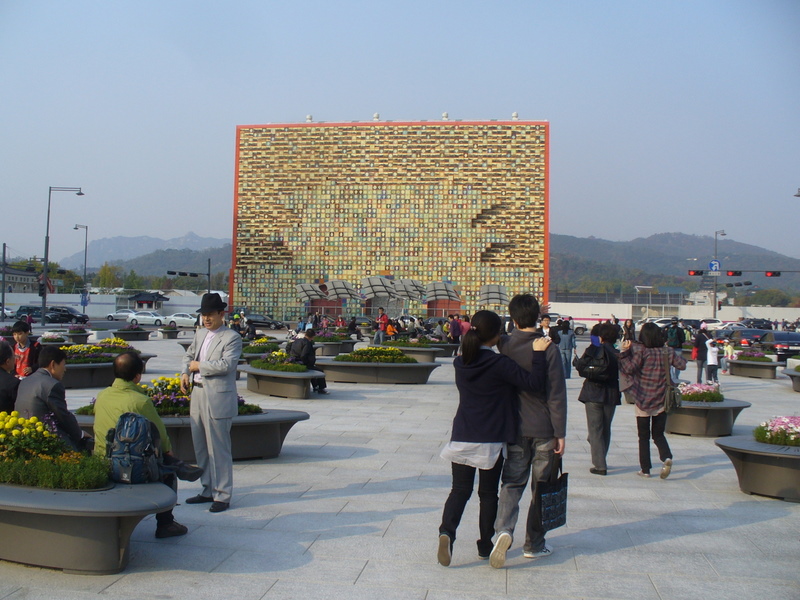
Modern art instead of the Japanese colonial building
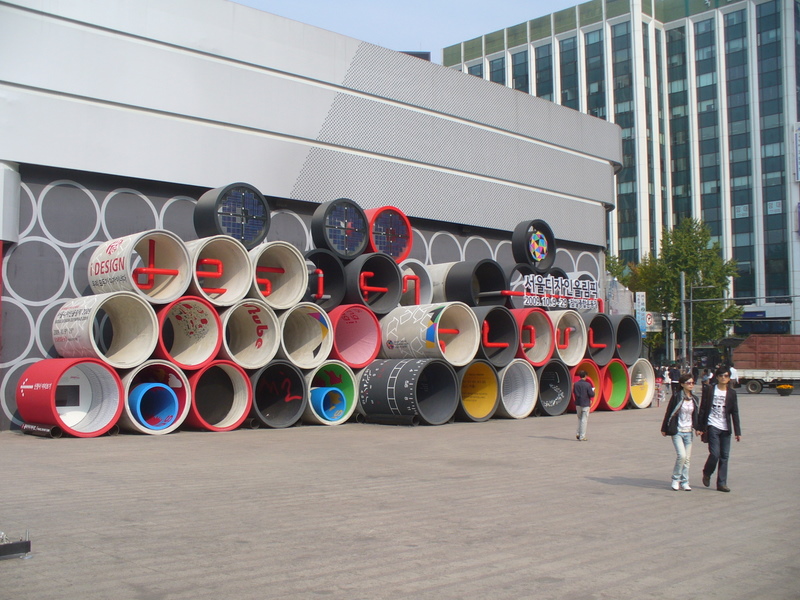
International Council of Societies of Industrial Design: Seoul is the World Design Capital 2010
The Kyobo bookstore extends 100 meters under the ground
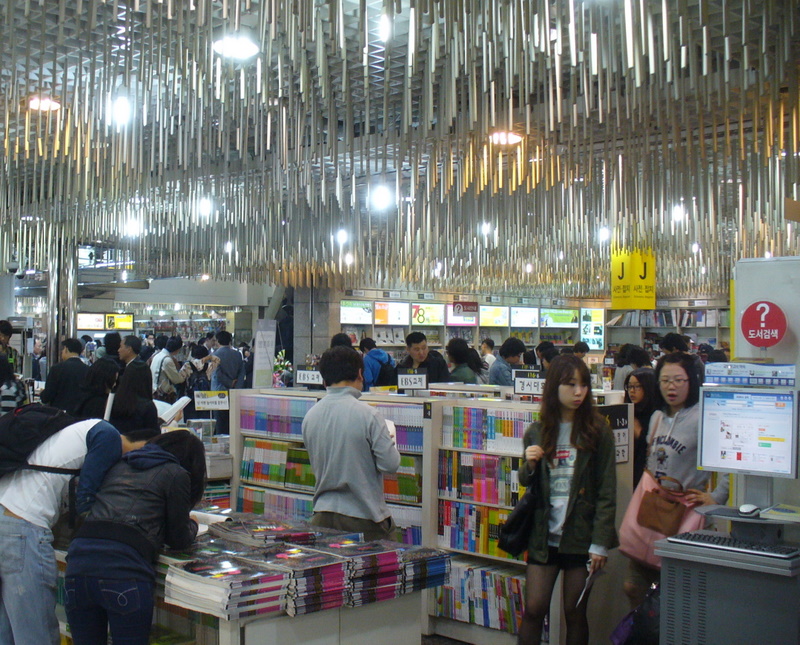
Kyobo: One of the biggest bookshops in the world
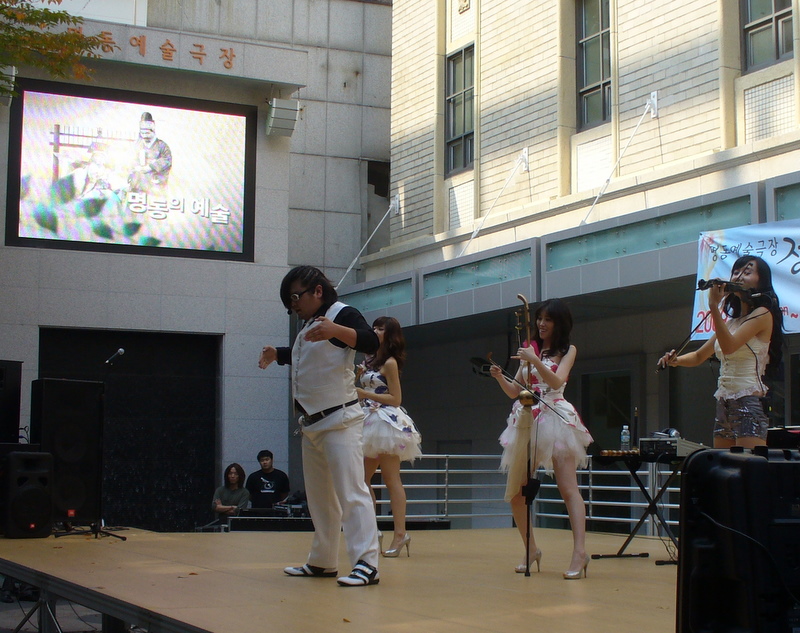
A Western violin and a Korean one-string instrument - together!
Everybody can find the way easily in the center of town:
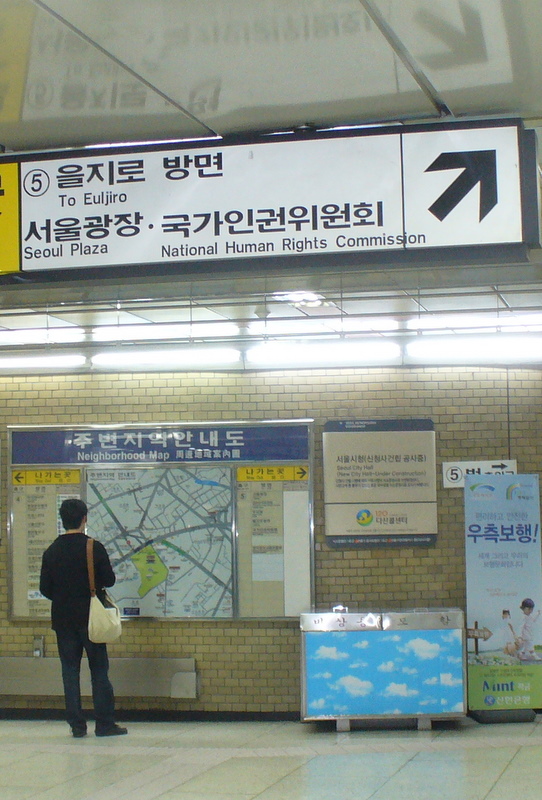
Public sign in a subway station: National Human Rights Commission - everybody can find the way easily
Please recommend us also to your colleagues and friends.

Although entitled ‘Reflections and Observations’ and being an interesting article, it comes a across as a comparison in urban development, but fails to consider Cambodia’s past. It appears as if the government wants to develop the country at all costs, regardless of possible consequences; hence the filling of Boeung Kak (boeung = pond, small lake, surely is a sin of the first order. But in general Phnom Penh is not on the road to extreme urban development comparable to Seoul. The Korean-inspired Camko City and the Gold Tower are exceptions, at least so far. Korean developers had to find out the hard way that Khmer just don’t like to live in apartments or high-rises. They still prefer their townhouses, and the rich their villas. I think a better comparison would be Vietnam, or Laos.
Thanks for the comments – well, I did not compare with Vietnam or Laos, as my starting point was the state visit of the President of the Republic of Korea, and my working visit to Seoul.
Of course there are a lot of urban developments referred to – but that was not my main focus. I cannot make professional photos, but I tried to capture also some things for which I have not seen parallels in Cambodia, which I found interesting: The street musicians use a Western violin and a traditional Korean one string instrument together in their entertainment for the people going out during lunch break – traditional and modern cultural elements merging together. Quite modern, colorful design, mixed into traditional environments. And the address of the National Human Rights Commission is on a public sign in the center of the city (the office is NOT housed in a government building, it is easily accessible) – while I know that some people in Phnom Penh had difficulties to find out where the Cambodian government’s Human Rights Commission office is located.
What I write “fails to consider Cambodia’s past” you say – well, what I tried to capture quickly is also quite different from Korea’s past. But different countries have different histories and are at different points of time.
I try, whenever possible, to draw some lines beyond the geographical and historical present.